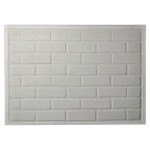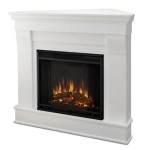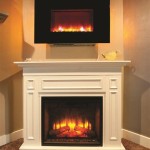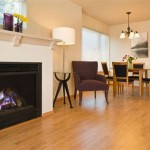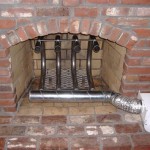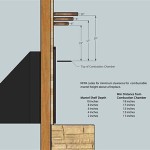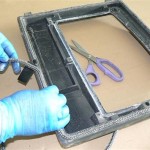Fireplace Tile Designs with Raised Hearth: A Guide to Essential Aspects
Fireplaces have long been a cornerstone of cozy and inviting homes, adding warmth and ambiance to living spaces. A well-designed fireplace can elevate the aesthetic appeal of a room while also providing a focal point for relaxation and entertainment. Among the various elements that contribute to a fireplace's overall design, the tile surround and raised hearth play a vital role in creating a striking visual impact and enhancing functionality.
Raised hearths, in particular, serve both practical and aesthetic purposes. They provide a physical boundary between the fireplace opening and the flooring material, preventing embers or debris from escaping into the room. Additionally, raised hearths can help to protect flooring from heat damage, making them particularly suitable for homes with wood or carpet flooring. In this article, we will delve into the essential aspects of fireplace tile designs with raised hearths, exploring different design options, material considerations, and installation tips to help you create a stunning and functional fireplace.
Design Considerations for Tile Surrounds with Raised Hearths
Fireplace tile surrounds with raised hearths offer a vast range of design possibilities. Here are a few key considerations to keep in mind:
- Tile Selection: Choose tiles that are specifically designed for fireplace applications and can withstand high temperatures and thermal stress. Look for tiles with a PEI rating of 4 or 5, indicating their suitability for areas with heavy foot traffic and potential heat exposure.
- Pattern and Color: The pattern and color of the tiles you choose will significantly impact the overall aesthetic of your fireplace. Consider the style of your home and the existing décor when selecting a tile design. Neutral colors and classic patterns, such as subway tiles or marble tiles, can create a timeless look, while bolder colors and geometric patterns can add a more modern or contemporary touch.
- Trim and Moldings: In addition to the tile surround, consider incorporating trim and moldings to add depth and dimension to the design. Mantel shelves and decorative moldings can provide a finishing touch to the fireplace and enhance its overall appearance.
- Height and Width: The height and width of the raised hearth will depend on the size of the fireplace opening and the overall design of the room. A general rule of thumb is to extend the hearth at least 16 inches beyond the fireplace opening on all sides.
- Height: The height of the raised hearth should be approximately 4-8 inches above the floor level. This height provides a comfortable seating position for those sitting in front of the fireplace and helps to prevent heat from spreading too far into the room.
Material Considerations for Raised Hearths
There are several different materials to choose from when constructing a raised hearth for your fireplace. Each material has its own unique properties and benefits:
- Stone: Stone, such as marble, granite, or travertine, is a classic choice for raised hearths due to its durability and natural beauty. It is heat-resistant and can withstand heavy use. However, stone can be expensive and may require professional installation.
- Tile: Tile is a versatile and affordable option for raised hearths. It is available in a wide range of colors, patterns, and textures, making it easy to match any décor style. Tile can also be installed over existing flooring, simplifying the installation process.
- Concrete: Concrete is a strong and durable material that can be used to create a custom-shaped raised hearth. It is relatively inexpensive and can be stained or painted to match the surrounding décor.
- Brick: Brick is another durable material that can create a rustic or traditional look for your fireplace. It is heat-resistant and can be installed in a variety of patterns.
Installation Tips for Fireplace Tile Designs with Raised Hearths
To ensure a safe and durable installation of your fireplace tile surround and raised hearth, follow these tips:
- Proper Preparation: Before beginning the installation, make sure the fireplace is clean and free of any debris. Ensure that the surrounding wall and floor are level and stable.
- Mortar Selection: When selecting mortar for the installation, choose a product that is specifically designed for fireplaces and high-temperature applications.
- Thin-Set Application: Apply thin-set mortar to the back of the tiles and press them firmly into place. Use a level to ensure that the tiles are evenly aligned.
- Grouting: Once the tiles have been installed, grout the joints between them. Use a grout that is designed for high-temperature applications and is color-matched to the tiles.
- Sealing: After the grout has dried, apply a sealer to the tiles and grout to protect them from heat, stains, and moisture.

Raised Hearth

Our Favorite Fireplace Design Ideas The Tile Blog

30 Most Beautiful Fireplace Tile Ideas For 2024 Decor Home

How To Tile Over A Brick Hearth Shine Your Light

Pin Page

Traditional Fireplace With Raised Hearth Photos Ideas Houzz

French Gothique Fire Surround Solid Raised Hearth With Rose Carving To Lintel Touch Fireplace Designs The Natural Stone Co

How To Tile Over A Brick Hearth Shine Your Light

Raised Fireplace Hearth Design Ideas

Diy Fireplace Makeover At Home With The Barkers

